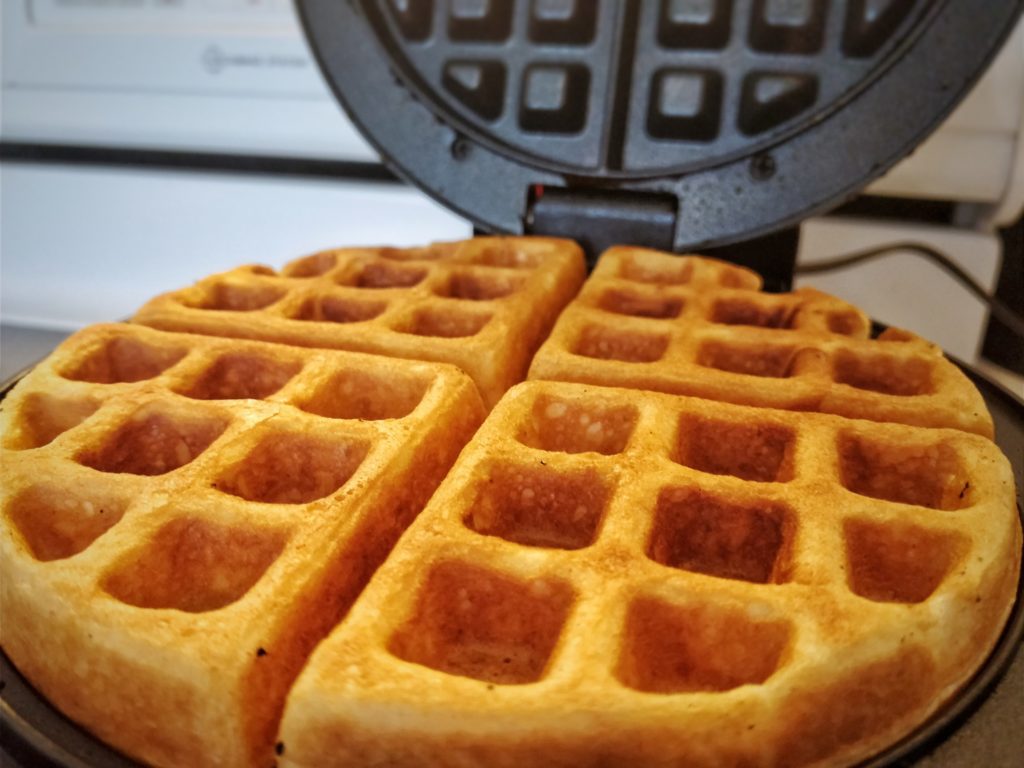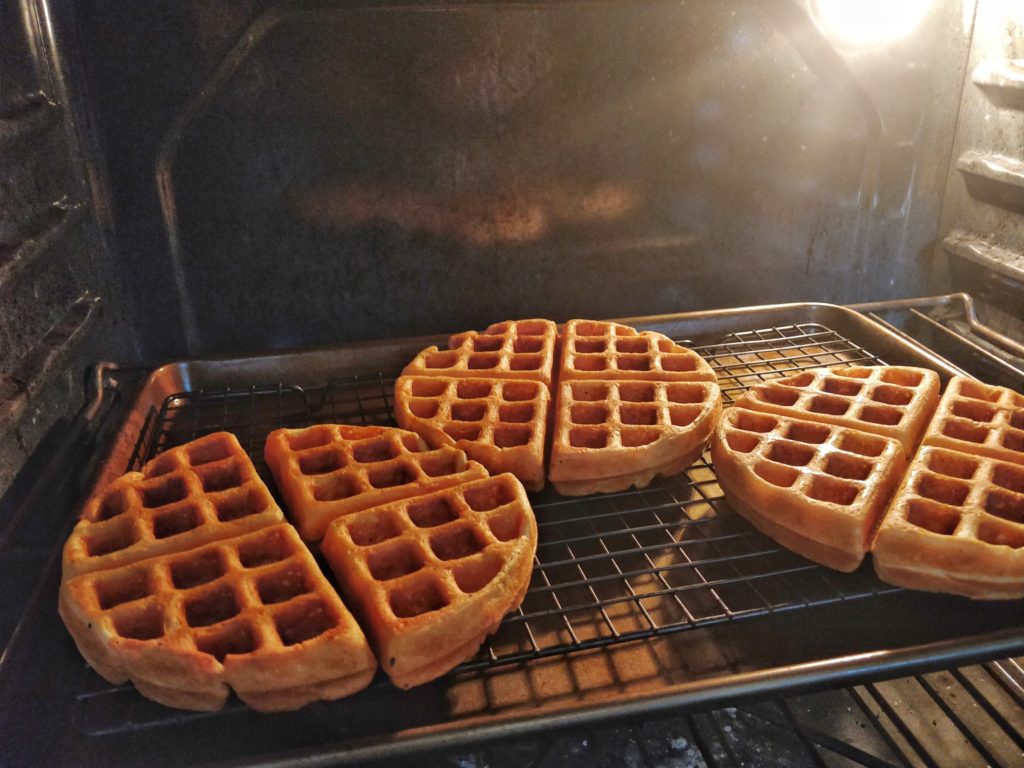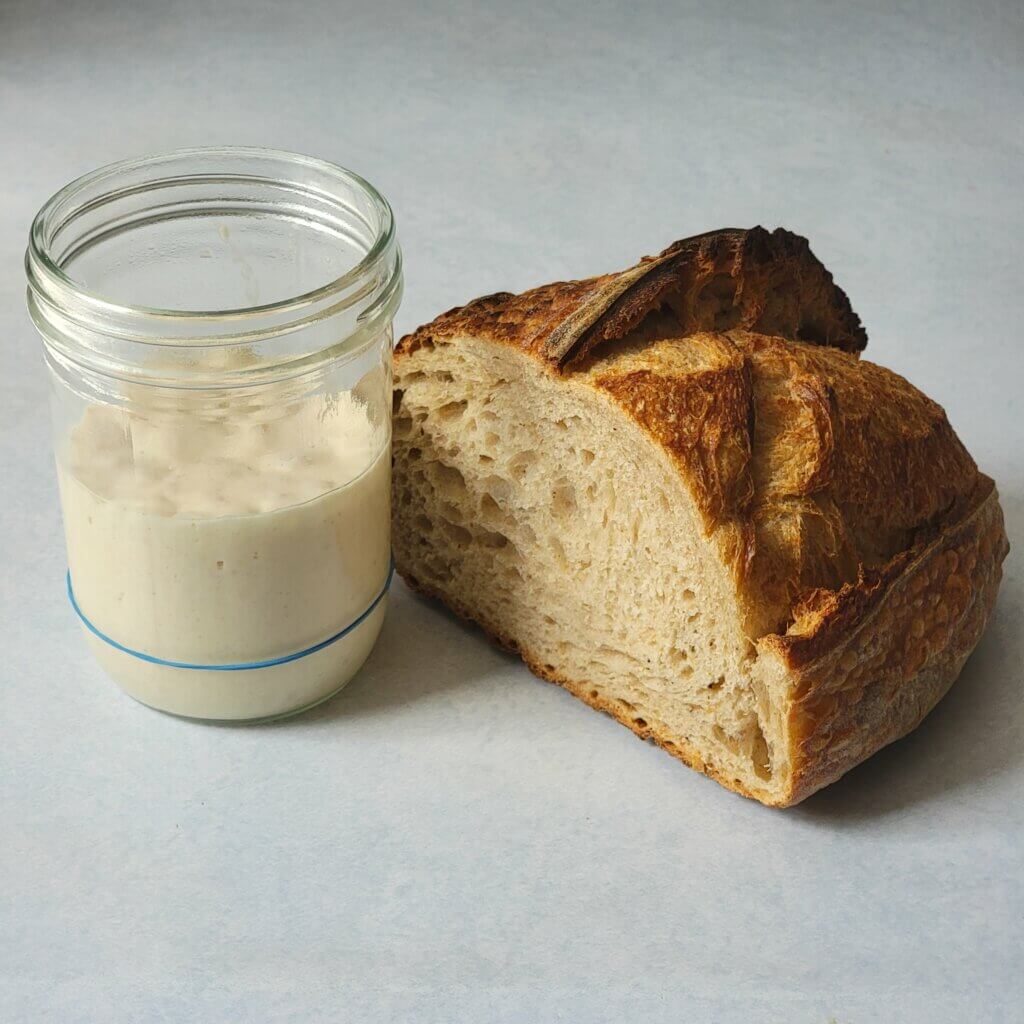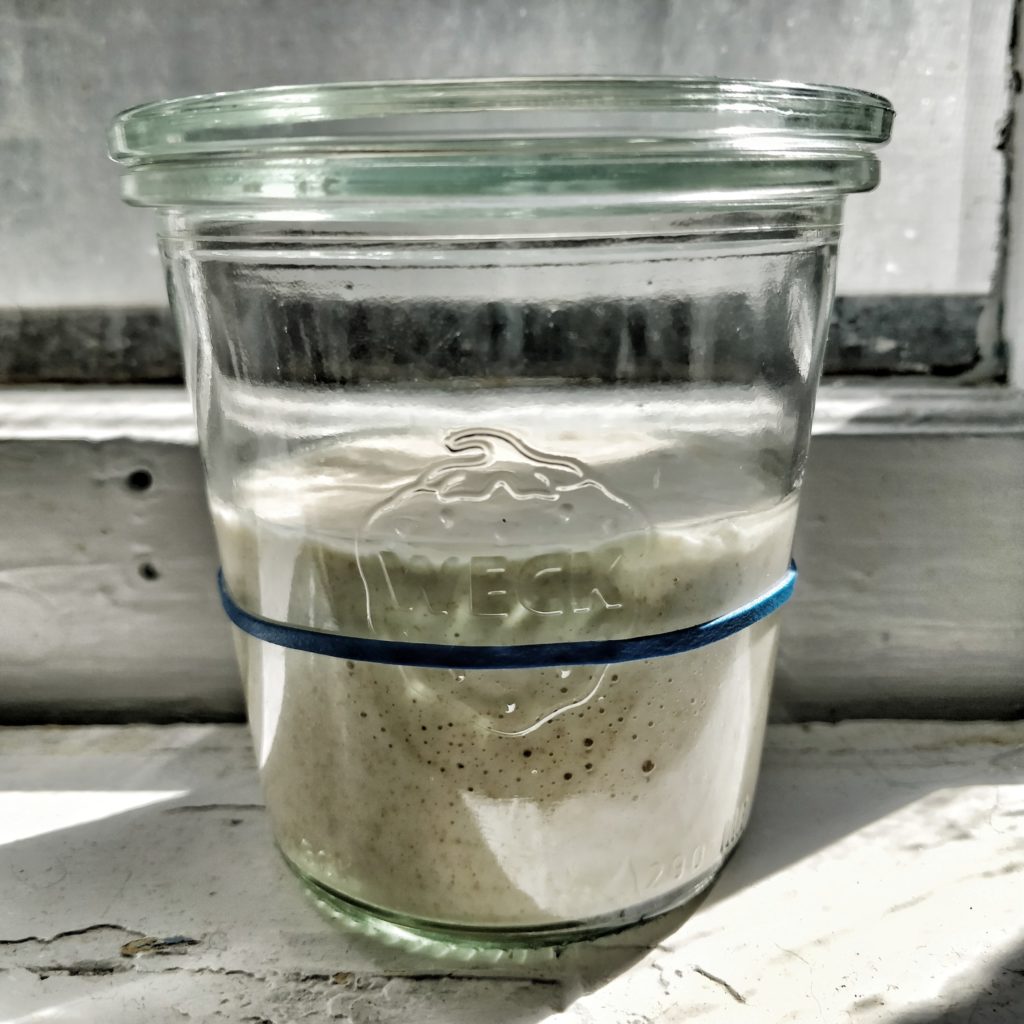Sourdough Discard Waffles

Sourdough discard is an underrated and versatile ingredient. If you’re saving your discard in a jar in the fridge like I do, you have basically half of most classic bread-like American breakfast foods already prepared!
Think about this: how many classic doughs and batters call for adding buttermilk and baking soda to achieve a leavening affect? Buttermilk, originally a byproduct of the butter-making (i.e. milk preserving) process, is naturally acidic due to the activity of lactobacillus. In fact, lactic acid (and thus lactobacillus, the bacteria that produces it) is named so because it was first isolated from sour milk!
What I’m getting at here is that you have what is essentially a thin, acidic batter that can absolutely stand in for the same amount of flour and buttermilk in any recipe. As long as your starter is 100% hydration, meaning equal parts by weight of flour and water, you can substitute for it by following this method:
Note the amount of buttermilk used by weight. Remove the same weight from the total amount of flour used in the recipe, then add the total weight removed in sourdough discard.
You can, of course, substitute sourdough discard in recipes that don’t call for buttermilk or some other acid, like these Sourdough Discard Crepes that I make just about every weekend (though these waffles are definitely a runner-up!).
I’ve essentially done the above substitution with a waffle recipe I had been playing around with for several years to come up with this one. It is absolutely just as good, and when you’re using a “waste product” to make most of the dough it certainly feels good to make!
The final step in this recipe is optional but I highly recommend it. Most recipes call for keeping the finished waffles in a warm oven to keep them hot while you finish making the whole batch, but I have accidentally discovered a better way! I like to make bacon and scrambled eggs to have with my waffle for breakfast, and I like the ease and practicality of cooking the bacon in a hot oven*. This is incompatible with keeping the waffles in a 200°F or so oven while finishing the batch, so after the bacon was done I popped the waffles in with the door cracked for a few minutes just to warm them up. I had accidentally left them in a bit longer than I wanted to, but to my surprise they were the crispiest waffles I had ever made!

The secret to super crispy waffles is to throw them into the oven at around 350-400°F for about 5 minutes, with the door cracked to allow steam to escape, before serving. When cooking initially, the waffle is basically steamed as all of the water evaporates and tries to escape, which is made a little difficult by the shape of the waffle iron. The oven helps drive away any excess moisture clinging to the the surface of the waffle, and a little more dry heat browning certainly doesn’t hurt.
Also helping with crispiness is the addition of corn starch.
Sourdough Discard Waffles

- 200g sourdough discard*
- 100g milk*
- 30g (2 Tbsp) brown sugar
- 30g (3 Tbsp) butter, melted
- 10g (1 Tbsp) oil
- 1/2 tsp vanilla extract
- 3g (1/2 tsp) salt
- 2 eggs
- 50g flour*
- 50g corn starch
- 1 1/2 tsp baking powder
- 1/2 tsp baking soda
- Preheat oven to 350°F.
- Whisk everything together until a relatively smooth batter is formed.
- Heat waffle iron, spray generously with cooking oil, then spoon enough batter in to properly fill your iron. When done, set aside on a wire rack and make the next waffle. Cook to your liking, but don’t go too dark, because…
- About 5 minutes before serving, pop the waffles into the oven on the wire rack (you could even put them right on the oven racks). Take them out when they’re nice an crispy!
Serve with butter, whipped cream, “dark color, robust taste” (or what we used to call “grade B”) maple syrup, compote, or however you like your waffles.




